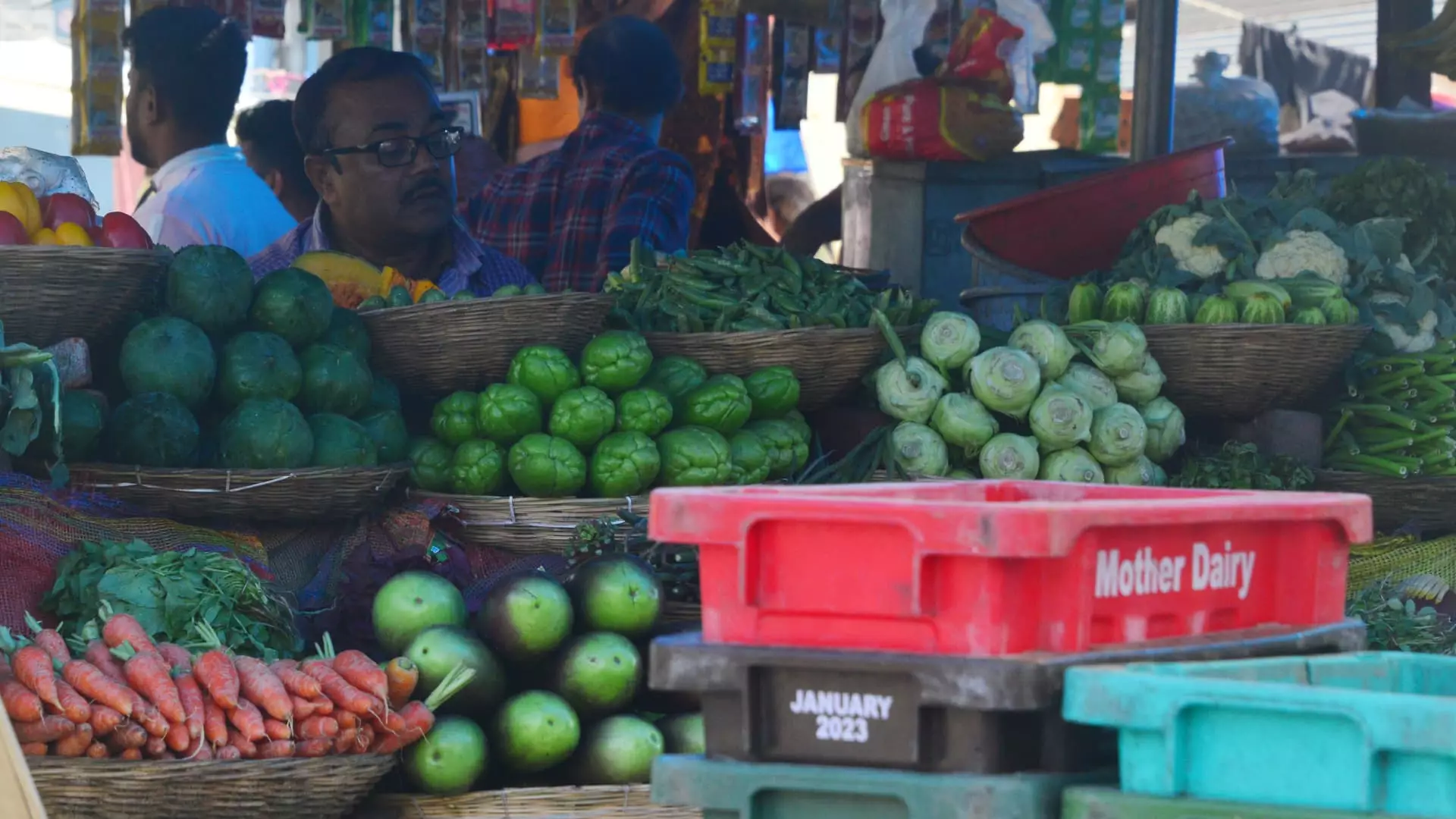India’s economic landscape is witnessing a notable shift as inflation rates exhibit a downward trend, raising discussions on potential monetary policy adjustments. The latest data from December reveals a year-on-year inflation figure of 5.22%, slightly trailing analyst predictions. This reduction signifies the second consecutive month of inflation decline, leading to renewed considerations from the Reserve Bank of India (RBI) regarding interest rate adjustments.
The latest inflation statistics, released by the Ministry of Statistics and Programme Implementation (MoSPI), denote the slowest price growth since August 2024. After reaching a 14-month peak of 6.21% in October, which surpassed the RBI’s 6% tolerance threshold, the December figure showcases a welcome shift. Market analysts, who anticipated a figure closer to 5.30%, now pivot their focus to the declining trend, emphasizing its potential implications for interest rates.
The RBI, under the guidance of new Governor Sanjay Malhotra, has given projections indicating that inflation could stabilize around 4.8% by the conclusion of the fiscal year in March 2025. This forecast aims to provide a clearer picture of the near-term economic environment, especially as the central bank tries to balance ongoing inflationary pressures with growth requirements.
A critical component of overall inflation is the trajectory of food prices, which has shown signs of easing. In December, annual growth in food prices fell from 9.04% in November to 8.39%, suggesting an overall decline in food cost pressures. Within this broader category, significant reductions were noted in the prices of vegetables, sugar, cereals, and confectionery items, further contributing to the favorable inflation numbers.
Nevertheless, the vegetable sector reveals mixed outcomes. While the overall inflation for vegetables decreased from 29.33% in November to 26.56% in December, certain staples such as peas, potatoes, and garlic have experienced remarkable price surges. This dichotomy stresses the complexities of the Indian agricultural sector, where seasonal and demand-related factors continue to shape pricing intricacies.
Despite the positive momentum in inflation control, the Indian economy grapples with growth challenges. The GDP growth rate for the second fiscal quarter of 5.4% languishes below expectations and nears a two-year low. This disparity prompts experts to contemplate the interaction between monetary policy and economic recovery rates. Economists anticipate that the RBI’s upcoming Monetary Policy Committee (MPC) meeting in February might usher in a trend of interest rate cuts, largely motivated by the need to stimulate growth.
Harry Chambers of Capital Economics suggests the likelihood of a 25 basis point reduction in the repo rate, potentially lowering it to 6.25%. However, this trend is complicated by the weakening rupee, which has recently fallen to a record low against the dollar. The depreciation complicates the RBI’s stance, as maintaining higher interest rates may be necessitated to bolster the currency’s value, creating a balancing act for economic policymakers.
The challenges faced by the RBI extend beyond simply managing inflation rates and stimulating economic growth. Analysts from Bank of America have provided a mixed outlook on India’s recovery trajectory. While growth in sectors such as agriculture, fuel consumption, and other core industrial activities may remain robust, lagging indicators around credit growth and consumption patterns lend uncertainty to the overall economic climate.
Furthermore, the organization downgraded its GDP growth forecast for the fiscal year ending March 2025, from 6.8% to 6.5%, which falls below the RBI’s earlier projection of 6.6%. This realignment of expectations highlights the careful considerations that must guide India’s monetary policymakers.
India’s recent decline in inflation rates presents a hopeful beacon for economic recovery, yet it unveils intricate challenges interlinked with global economic engagements and domestic growth. As the RBI contemplates interest rate adjustments amid a fluctuating currency and uncertain growth parameters, the subsequent months will likely be pivotal in determining the trajectory of both inflation and economic revitalization in the country. Collaboration between fiscal policy initiatives and comprehensive strategies will be essential to navigate this evolving economic landscape successfully.



Leave a Reply